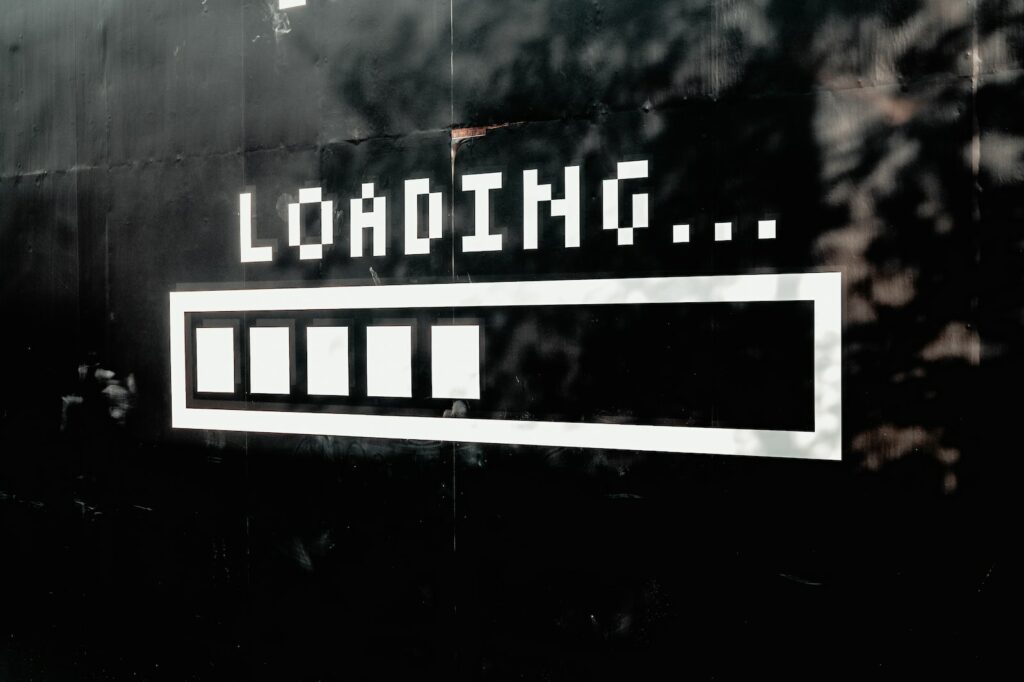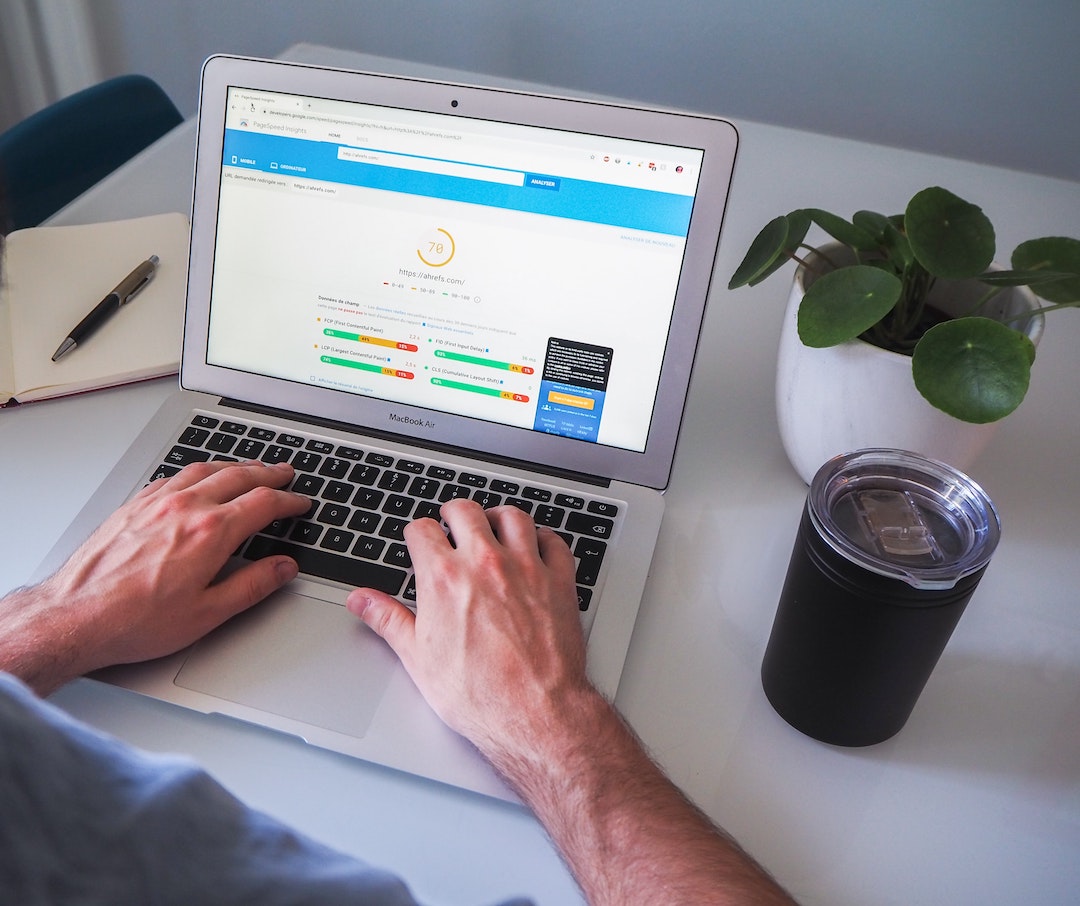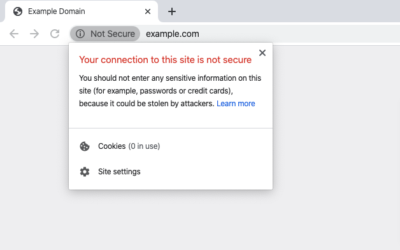Have you ever had a problem with your WordPress site loading slow? If so, then this article is for you. The faster your site loads, the better it will be for SEO and conversions. We have put together the 5 secrets to a fast WordPress Site.

1. Use a caching plugin for faster loading times
Loading times are a key factor to 1 of the 5 secrets to a fast WordPress Site. A page-caching plugin will basically serve a static version of your site to search engines and visitors. A static version is much faster to load than the dynamic version.
This simplified setup is perfect and can scale as your site size grows. But in order for all of your visitors to see a similar version of your site, you need caching.
Why should I care if my site loads fast?
This is pretty obvious but I will quickly elaborate. If your site takes ages to load, then most of your visitors will leave before seeing anything. When your site is slow, respondents will be negatively affected. This will only lead to higher bounce rates.
Google statistics state: “Bounce rate is one of the key metrics used by Google as a ranking factor”. For more information visit Google’s Webmaster Help Center.
We have all been there, either on a slow connection or running to the point of having a heart attack. It should be obvious why we don’t want Google to see our crappy loading times, but Google is also a business. They want you to come back. They want people to purchase. So, what do they do? They offer almost all of their AdWords ads at speeds around 3.5 or better. The shorter your load time, the faster your WordPress Site will be.
Step 1: Create a WordPress cache and use.htaccess
As mentioned above, there are a lot of caching plugins available. Really, they are just different ways of doing a simple cache. Caching isn’t a difficult step but can require some technical expertise. If you can’t do this on your own, there are a few easy options.
We want to use the Apache mod middleware to tell WordPress how to handle temporary files. This will essentially save the versions of our files that get modified quickly until the request is sent to the server.
2. Compress your images to reduce load time
Images added to an article may bias someone towards reading the page and therefore visiting your site. Choosing a thumbnail with optimized metadata improves your site speed. A second is typically better.
Note: Images mentioned in this article will not impact your site’s speed, but any thumbnails you add will result in a fast WordPress Site.
Use your content moderator bots to moderate and remove any duplicate content.
WordPress has the concept of a Content Moderator. They allow users to flag up content that may be outdated, misleading, or not suitable for the WordPress platform.
You need a content moderator on your site. Search their name using Google, or go to your site administrator panel:
There are other bots out there as well: content removal bots, content replacements bots, and remarketing bots. Highly skilled content moderators can do this on their own, but most will require a little help from their administrator of choice.
As a content moderator, you will need to approve all flagged content, and remove any duplicate content. Make sure to keep the comments section clean and nicely organised.
Adding a widget to your page does not indicate the page is being optimised, but draws traffic to the page. This will cause people to land on your site and begin reading.
Widgets are often used to summarise information. For example, “what is X” or “what is Y.”
Review the SEO guidelines on your website. Check that they are being followed. Write you site’s SEO title and meta descriptions in this way: Optimised.
“Thank you for visiting this article about [INSERT TITLE AND meta DESCRIPTION]. This story will attempt to answer the following question: How does [INSERT PROBLEM SOLVED] benefit the reader?”
Use the use keyword.

3. Minify CSS and JavaScript to remove unnecessary characters
Minifying your CSS and JavaScript files can help your site load faster. To do this, you need to use a tool, like YUI Compressor or Google Closure Compiler, to remove unnecessary characters from your files. The benefits of minifying your files include faster load times, reduced memory usage, and reduced bandwidth.
A compressed site will allow you to optimize it to increase the SEO ranking on search results pages. To do this, you need to copy your content into a blog post. Google wants to see Vertical downloading. To copy the content into your post, use your browser ‘Copy as HTML’ button. Give the URL of the files you wish to copy as the URL to your blog post. Now on your blog post, you can push the settings for your website changes to apply. There are several places you can do this:
Step 1: Setting page type to article
Go to Theme | Page type.
Step 2: Setting page height to 100%
Go to Yoast SEO plugin page and install the Yoast SEO 6 extension.
Step 3: Setting page width to 300%
Go to Yoast SEO plugin page and install Yoast SEO 7.
Step 4: Setting page background colour to transparent
For more information on the background or page colour, click here.
Step 5: Text to enhance SEO
The Text to enhance SEO plugin makes it easy to write headlines with SEO. It also allows you to create custom text and containers to increase your site SEO by improving search engine rankings. To install the plugin, go to Yoast SEO plugin page.
To insert your Custom Text, click to the bottom of the Custom Text box.
Then, select an HTML tag from your blog post and paste it inline into your blog post.
The final step is to upload your updated texts.
4. Enable gzip compression on your WordPress site
If you’re running a WordPress blog, make sure to check the settings and enable gzip compression. This will make your site load faster for all your readers. It will also make your blog load faster for all users, regardless of whether they are on a desktop computer or mobile.
Here is a 3 Section tutorial
Section 1: Enable streaming and static display on your WordPress site. WordPress doesn’t support both streaming and static display. Contently also makes it easy to add streaming to a theme. This is done by supporting the w3techs Stream API feature in the w3techs Theme Engine and a basic w3techs Stream API plugin. This means that you just need to upload your.po/.mo file and a Test Page to get tracking.
Make sure the max upload size for a single post is met. (This is a WordPress blog — implementing this will absolutely increase your site speed).
Section 2: Enable PHP memcached. With PHP memcached, your site can cache static pages (images, video, blog) and streams without the need for PHP. The advantage of PHP memcached is that you don’t need to serve 10,000 queries per second around the clock and lose performance. Static files are most common for loading images and media. There are other blogging tools (PredatorML, Blogger, etc.) that make it easier to install the required plugins to have your site set up.
Now that your settings have been configured, anything can be done to speed up the page. Adding images, adding a background and a slider is a good starter.
Section 3: Adding responsive image is a great way to change the default image used for your blog for mobile devices. But it is not the only option for images. Zendesk (WordPress affiliate program) allows you to upload your own images created with your own CMYK colors, sizes and formats. For example adding a Google Maps image of Helsinki, Finland.
Update your theme and plugins.
Make sure w3techs does not load background images.

5. Set up a CDN for faster delivery of files across the world
If you’re working with large files, it’s a good idea to set up a Content Delivery Network or CDN. A CDN will make sure that the files are delivered to your customer’s browser in the quickest way possible. You can read more about CDN here:https://www.smashingmagazine.com/2015/12/21/how-to-substack-on-wordpress-to-speed-up-the-experience/. The faster the delivery, the better the user experience.
The same goes for images. In this day and age, images play a vital role in all forms of marketing and every website has them. Images speak volumes about a company and what they stand for. It’s crucial to make sure they load quickly so we can get the most out of the SEO portion of the equation. What exactly determines image loading speed? The answer is CDN optimization.
When you host an alternative installation of WordPress on another computer (whether inside a shared or private cloud), rather than getting them linked in via WordPress.org or a subdomain, you can set them up inside a CDN. This way, you make the image downloading and rendering happen from where it’s needed and not on your site. Let us look at 5 ways to set up images using the 7Net CDN:
To set up an image using the CDN:
1. Log into your WordPress installation and go to Settings » Add-Ons.
2. Select the Image bank dropdown.
3. Navigate to Add Cloud Sources, select 7Net CDN and confirm the installation.
4. Next time you upload an image to your site, the image will be sent directly from 7Net to your browser.
Another benefit of using the 7Net CDN is the security. This makes it easier for you to secure your images by simply adding further storage to your hosting account instead. This greatly speeds up the loading of all images on your site. Check how easy it is to add additional storage by going to your hosting account and adding the additional storage insurance.
In conclusion by using these 5 steps that we have put together will improve the speed of your website. Preventing your customers from slowing down! Here are 5 effective solutions :
- 1: Use a caching plugin
- 2: Compress Images
- 3: Minify CSS and Java Script
- 4: Enable gzip compression
- 5: Set up a CDN








0 Comments